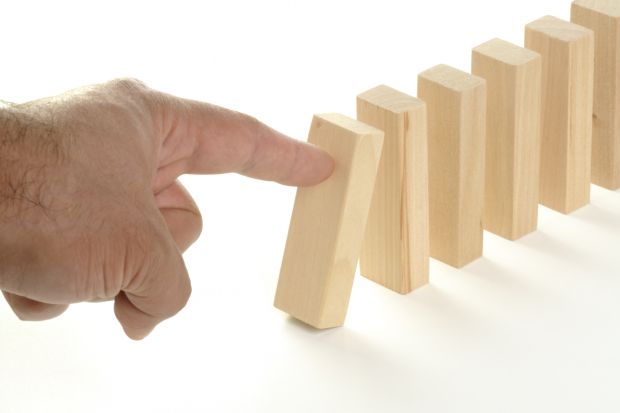The “economic aftershocks” of the coronavirus could strip Australia of the equivalent of 14,000 full-time researchers, diluting its capacity for innovation when it is most needed, according to a taskforce chaired by chief scientist Alan Finkel and led by the Australian Academy of Science.
A “rapid research report” suggests the pandemic will erode Australia’s research workforce on multiple fronts – including university research, business research and development, medical research institutes (MRIs) and government research agencies – with shocks to each sector exacerbating the damage to others.
For example, the report says the slump in business expenditure on R&D (BERD) will be “an order of magnitude worse” than the downturn experienced during the global financial crisis between 2007 and 2009. It cites estimates that some 1,625 full-time research jobs were erased from private sector enterprises over the three weeks from mid-March.
Such impacts could be magnified by losses in the MRIs, which depend on commercial income and philanthropy as well as government grants, and face a revenue decline of between A$200 million (£105 million) and A$400 million over the next two years.
Declining BERD could also jeopardise the ability of universities and MRIs to accept allocations from the A$20 billion Medical Research Future Fund (MRFF), which requires co-investment from other sources.
Meanwhile, plummeting international enrolments will strip billions of dollars from university budgets, consuming the co-contributions required for projects funded by industry, government and non-profit sources. International tuition fee revenue is also used to bankroll research salaries and facility costs, the report notes.
Such problems will be compounded by the absence of some 9,000 of the 17,000 or so foreign research students who comprise more than one-third of Australia’s doctoral students and are concentrated in science-related areas. Postgraduate students constitute 57 per cent of the university R&D workforce, the report points out.
The research activity of the equivalent of 24,000 full-time academics is also being constrained as universities jettison casual employees and foist more teaching responsibilities onto permanent staff.
The Australian Academy of Technology and Engineering, which led the report’s production, said universities performed approximately 43 per cent of the applied research conducted in Australia. “A decline…may limit economic growth by slowing the development of new technology, skills and efficiency gains in service and production processes,” warned CEO Kylie Walker.
The report is the sixth produced by the “Rapid Research Information Forum” since its inception in April. The forum brings together 15 learned academies, representative groups and scientific advisory offices in Australia and New Zealand to provide quickfire answers to pandemic-related questions posed by health, science and education ministers.
The report says significant university job losses “have not yet been realised” because institutions have so far cut costs elsewhere. But ultimately, at least 7,000 active researchers are among the 21,000 full-time equivalent university staff at risk of losing their jobs “in the next six months alone”.
Such impacts could snowball, with Curtin University projections suggesting that at least 38 per cent of the 79,000-strong research academic payroll “is at risk”.
Another 3,000 MRI positions could be lost “over the next 12 to 24 months”, the report adds. While the federal government’s JobKeeper employment subsidy programme could safeguard many of these jobs, universities’ exclusion from the scheme “will have a negative impact on some MRIs”.
Register to continue
Why register?
- Registration is free and only takes a moment
- Once registered, you can read 3 articles a month
- Sign up for our newsletter
Subscribe
Or subscribe for unlimited access to:
- Unlimited access to news, views, insights & reviews
- Digital editions
- Digital access to THE’s university and college rankings analysis
Already registered or a current subscriber? Login










